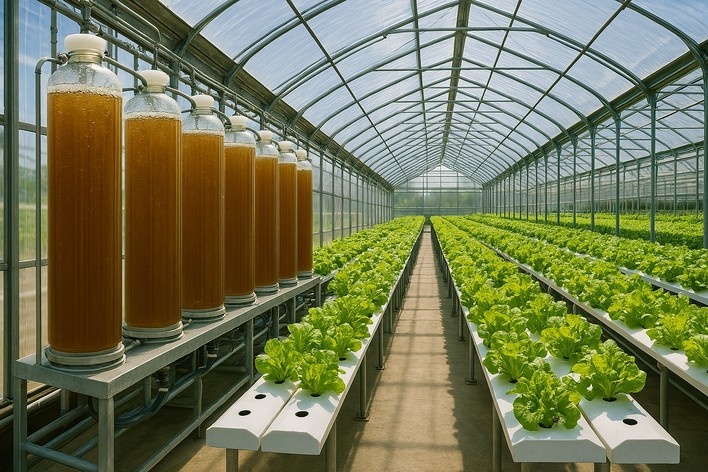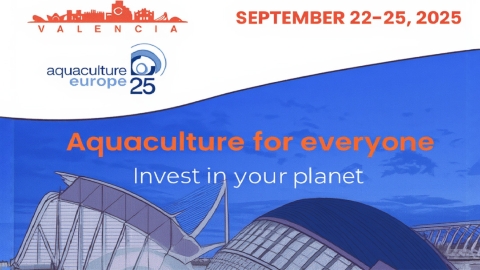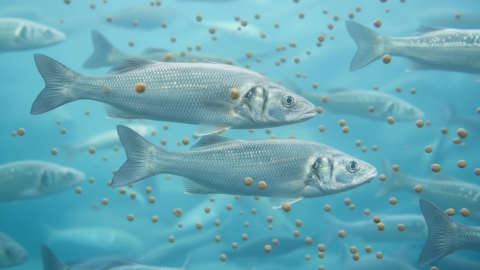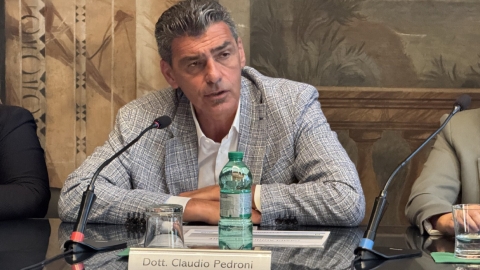
A team from the University of Almería, in Spain, has demonstrated that marine microalgae could provide a sustainable and cost-effective solution for managing hydroponic effluents, paving the way for new opportunities in the circular economy with the agricultural sector.
The ‘Marine Microalgae Biotechnology’ Research Group at the University of Amería has published a study in Science of the Total Environment examining the potential of the microalga Amphidinium carterae to treat wastewaters generated by hydroponic crop production. Entitled Amphidinium carterae growth in hydroponic wastewater: A sustainable approach to microalgae-based process promoting a circular bioeconomy, the research shows how this species can thrive by utilising the nutrients present in hydroponic effluents, completely removing nitrogen and phosphorous while generating high-value biomass.
Hydroponic vegetable cultivation, increasingly widespread around the world, presents the challenge of handling large volumes of nutrient-enriched water post-use. If not properly treated, these effluents can contaminate surrounding soils and groundwater.
The research team-comprising Lorenzo López, Nazaret Ballesteros, Yolanda Soriano, Francisco García, Asterio Sánchez, Antonio Contreras, and María del Carmen Cerón – proposes a solution based on this microalga species, which not only removes nitrogen and phosphorous but also valorises the effluent by producing bioactive compounds of comercial interest.
Specifically, the microalga demonstrated sustained growth under conditions of high nutrient load, achieving complete normal of nitrogen and phosphorous from the treated water. Moreover, a significant increase was observed in the production of carotenoids, polyunsaturated fatty acids, and amphidinols, “fungicidal compounds produced by the microalga itself,” the authors highlight.
This breakthrough “could transform how hydroponic effluents are managed, simultaneously promoting the circular economy and generating useful biological products, such as agricultural fungicides.” The researchers describe the results as “very promising for a more sustainable future in agriculture.”
In terms of practical applications, the authors note that, in the short to medium term, “this research could be particularly significant for agriculture in Almería, given that the province is one of Spain’s-and the world’s-leading producers of hydroponic crops.” The technology proposed “offers improvements in water management for these systems,” especially relevant in a region where “Almería faces challenges of water scarcity and resource contamination.” Successful implementation would enable effective treatment of hydroponic effluents, reducing environmental impact and improving water use efficiency.
From a sustainable and regulatory perspective, the researchers emphasise that “adopting this technology would help farmers meet increasingly stringent environmental regulations, particularly those concerning agricultural wastewater management, enhancing the sustainability of their practices.” Additionally, it would help reduce effluent treatment costs and further promote circular economy models across the agricultural sector.
The study also underlines the “valorization of agricultural by-products,” by harnessing nutrients present in effluent to generate biomass rich in bioactive compounds of high value for the agricultural, cosmetic, nutraceutical and pharmaceutical sectors. In this regard, the authors suggest that “farmers in Almería could benefits from the valorization of these agricultural by-products” through partnerships with specialised companies enabling them to diversify their income streams without the need of individually undertake complex technological processes.



